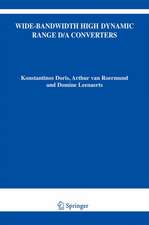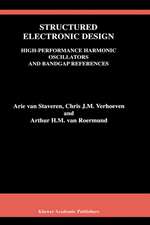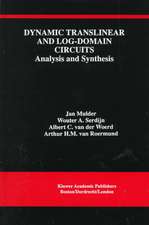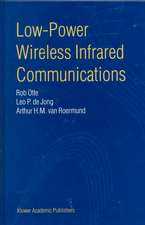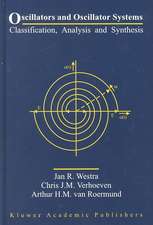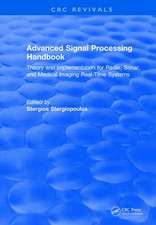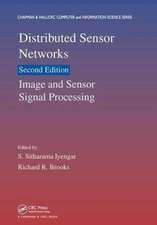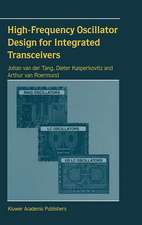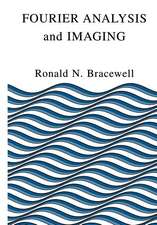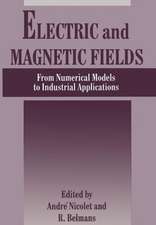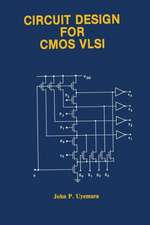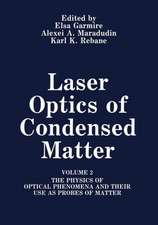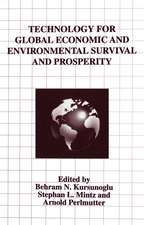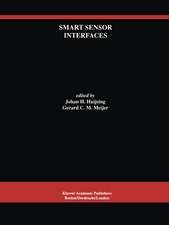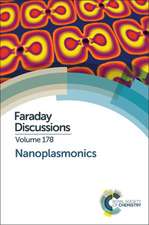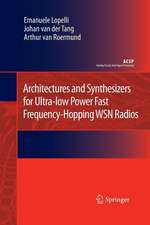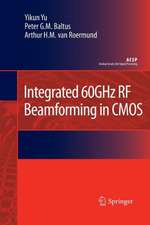Low-Power Deep Sub-Micron CMOS Logic: Sub-threshold Current Reduction: The Springer International Series in Engineering and Computer Science, cartea 841
Autor P. van der Meer, A. van Staveren, Arthur H.M. van Roermunden Limba Engleză Paperback – 26 iul 2012
Din seria The Springer International Series in Engineering and Computer Science
- 24%
 Preț: 1041.98 lei
Preț: 1041.98 lei - 20%
 Preț: 643.50 lei
Preț: 643.50 lei - 18%
 Preț: 1225.62 lei
Preț: 1225.62 lei - 18%
 Preț: 965.02 lei
Preț: 965.02 lei - 20%
 Preț: 646.12 lei
Preț: 646.12 lei - 18%
 Preț: 948.79 lei
Preț: 948.79 lei - 20%
 Preț: 646.62 lei
Preț: 646.62 lei - 15%
 Preț: 637.46 lei
Preț: 637.46 lei - 20%
 Preț: 643.83 lei
Preț: 643.83 lei - 18%
 Preț: 949.23 lei
Preț: 949.23 lei - 20%
 Preț: 644.48 lei
Preț: 644.48 lei - 20%
 Preț: 994.92 lei
Preț: 994.92 lei - 20%
 Preț: 645.97 lei
Preț: 645.97 lei - 18%
 Preț: 946.87 lei
Preț: 946.87 lei - 20%
 Preț: 995.57 lei
Preț: 995.57 lei - 18%
 Preț: 956.99 lei
Preț: 956.99 lei - 20%
 Preț: 644.98 lei
Preț: 644.98 lei - 15%
 Preț: 649.54 lei
Preț: 649.54 lei - 18%
 Preț: 950.21 lei
Preț: 950.21 lei - 18%
 Preț: 1221.38 lei
Preț: 1221.38 lei - 18%
 Preț: 957.62 lei
Preț: 957.62 lei - 15%
 Preț: 643.99 lei
Preț: 643.99 lei - 18%
 Preț: 948.47 lei
Preț: 948.47 lei - 18%
 Preț: 947.35 lei
Preț: 947.35 lei - 20%
 Preț: 1284.65 lei
Preț: 1284.65 lei - 20%
 Preț: 1628.31 lei
Preț: 1628.31 lei - 20%
 Preț: 1285.78 lei
Preț: 1285.78 lei
Preț: 381.00 lei
Nou
Puncte Express: 572
Preț estimativ în valută:
72.93€ • 79.24$ • 61.30£
72.93€ • 79.24$ • 61.30£
Carte tipărită la comandă
Livrare economică 21 aprilie-05 mai
Preluare comenzi: 021 569.72.76
Specificații
ISBN-13: 9781475710571
ISBN-10: 1475710577
Pagini: 172
Ilustrații: XIV, 154 p. 128 illus.
Dimensiuni: 155 x 235 x 9 mm
Greutate: 0.25 kg
Ediția:Softcover reprint of the original 1st ed. 2004
Editura: Springer Us
Colecția Springer
Seria The Springer International Series in Engineering and Computer Science
Locul publicării:New York, NY, United States
ISBN-10: 1475710577
Pagini: 172
Ilustrații: XIV, 154 p. 128 illus.
Dimensiuni: 155 x 235 x 9 mm
Greutate: 0.25 kg
Ediția:Softcover reprint of the original 1st ed. 2004
Editura: Springer Us
Colecția Springer
Seria The Springer International Series in Engineering and Computer Science
Locul publicării:New York, NY, United States
Public țintă
Professional/practitionerCuprins
1. Introduction.- 1.1 Power-dissipation trends in CMOS circuits.- 1.2 Overview of present power-reduction solutions.- 1.3 Aim and scope of this book.- 1.4 Organization of the book.- 2. Power Versus Energy.- 2.1 Power considerations.- 2.2 Energy considerations.- 2.3 Conclusions.- 3. Power Dissipation in Digital CMOS Circuits.- 3.1 Thermodynamics of computation.- 3.2 Functional power dissipation.- 3.3 Parasitical power dissipation.- 3.4 Trends in power dissipation.- 3.5 Conclusions.- 4. Reduction of Functional Power Dissipation.- 4.1 Node transition-cycle activity factor.- 4.2 Clock frequency.- 4.3 Transition-cycle energy.- 4.4 Conclusions.- 5. Reduction of Parasitical Power Dissipation.- 5.1 Leakage power dissipation.- 5.2 Short-circuit power dissipation.- 5.3 Need for weak-inversion current reduction.- 5.4 Conclusions.- 6. Weak-Inversion Current Reduction.- 6.1 Classification.- 6.2 Conclusions.- 7. Effectiveness of Weak-Inversion Current Reduction.- 7.1 General effectiveness.- 7.2 Technique-specific effectiveness.- 7.3 Conclusions.- 8. Triple-S Circuit Designs.- 8.1 Process flow.- 8.2 Experimental circuits.- 8.3 Leakage, speed, area and functional power.- 8.4 Practical applications and limitations.- 8.5 Conclusions.- 9. Conclusions.- 10. Summary.- References.
Caracteristici
Classifies all power dissipation sources in digital CMOS circuits Provides for a systematic approach of power reduction techniques A clear distinction between power dissipated to perform a calculation in a certain time frame, i.e. functional power dissipation, and power dissipated even when a circuit is idle, i.e. parasitical power dissipation Power dissipation is discussed from a fundamental, quantum mechanical and a practical point of view Theory is accompanied with practical circuit implementations and measurement results

